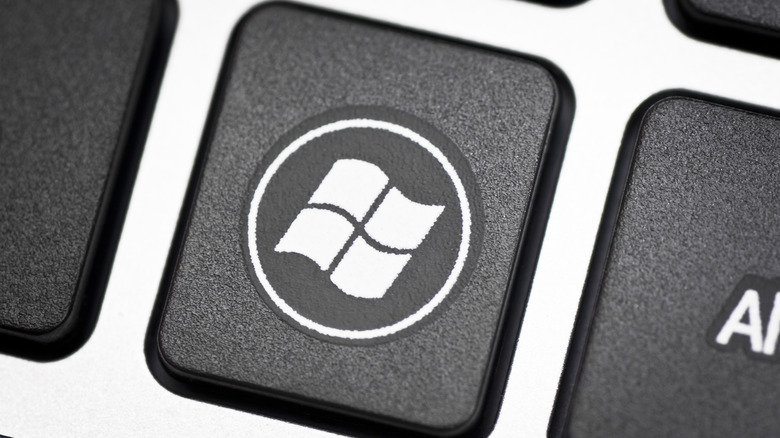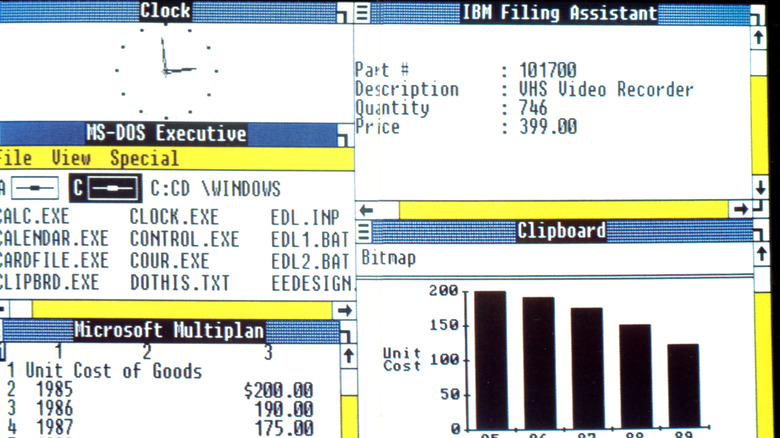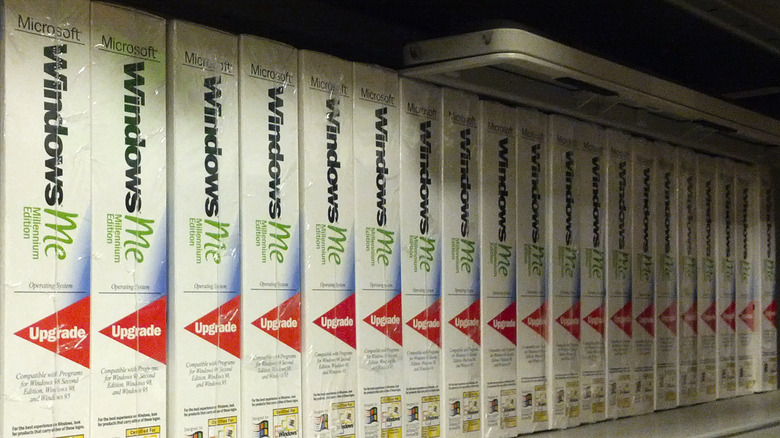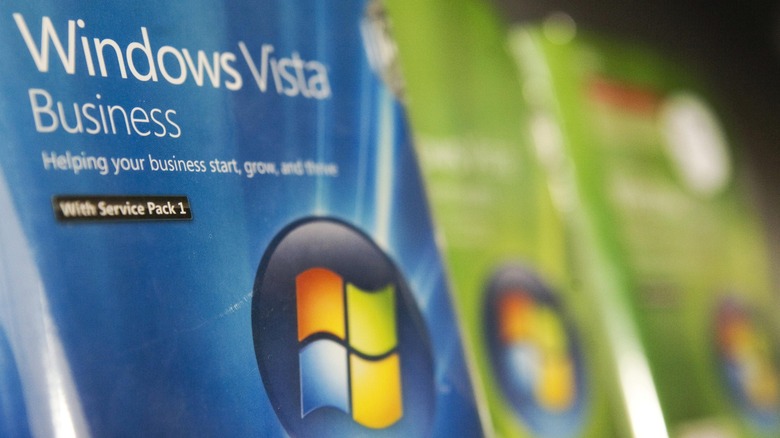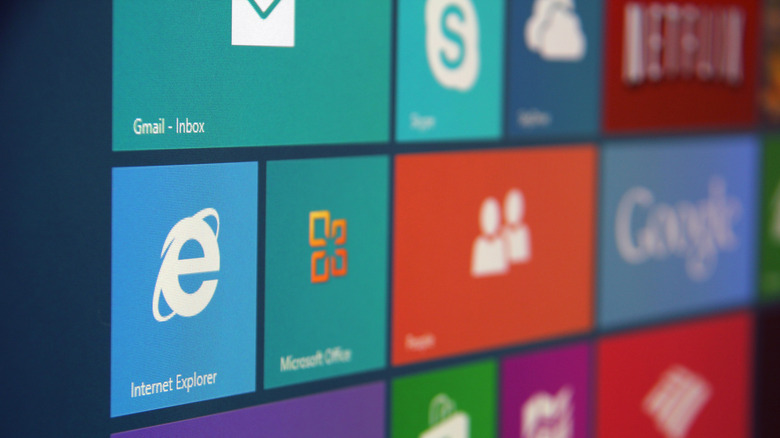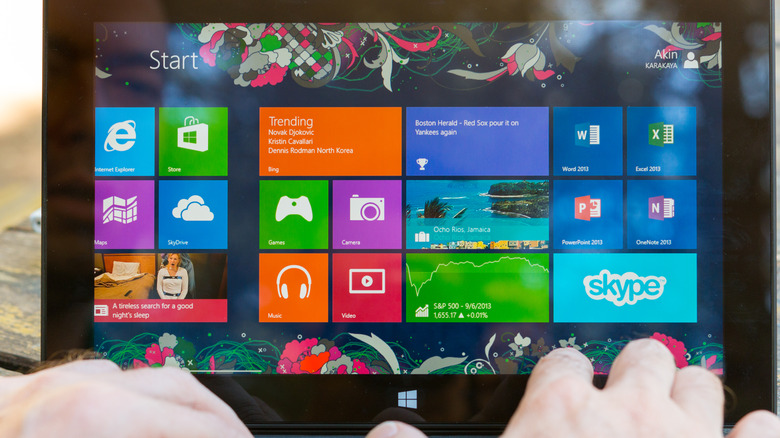The 5 Worst Versions Of Microsoft Windows Ever Released
Microsoft's Windows operating system is one of the most popular and ubiquitous in the modern world. If you're not running macOS or Linux, you're probably running Windows, and for years on end, it was the operating system on which many of us were raised. Since it's been this way for so long, it wouldn't be unreasonable to think of Windows as an unstoppable juggernaut, the absolute good of operating systems. This, however, was not the case.
In the nearly 40 years since the initial advent of Windows, there have been some absolute bombs in the OS' usually-prestigious line. Some of these versions were lacking in critical features, others bloated with useless ones, and still others so unstable that you could barely get a day's browsing done on them without being greeted by the ol' Blue Screen of Death. Windows may be doing okay for itself nowadays, but we still remember the major missteps in its long history.
Windows 1
It may seem a little strange to talk smack about the very first iteration of Windows, but the simple fact of the matter is that it took a good while for the OS to find its footing. Back in 1985, the big kid on the home computer block was Macintosh — nearly all home computer users owned Apple products thanks to its development of the first graphical interface. Microsoft, having made its fortune on MS-DOS, wanted a slice of the graphical pie, but their first attempt left something to be desired.
Windows 1 was missing several of the vital apps that would eventually make the operating system appealing, and its layout was a bit clunky and overly mechanical. You couldn't even have open windows overlapping each other, which made everything look like a spreadsheet. Besides all that, it was generally underwhelming in the performance department and lacked compatibility with programs that Macintosh users had gotten used to.
[Image by Rezonansowy, Microsoft, Public domain, via Wikimedia Commons| Cropped and scaled | CC BY-SA 3.0]
Windows ME
Windows Millennium Edition, or ME for short, was the final Windows operating system based on MS-DOS, released, of course, at the turn of the millennium in 2000. Microsoft had been planning on switching over to the Windows NT kernel after Windows 98, but they needed a little more time to develop their new OS, so Windows ME was released to tide the masses over. Unfortunately, this quick patch job swiftly made its rickety nature apparent to all who made the mistake of installing it.
Windows ME is one of the most legendarily unstable versions of Windows to date. Whether you were browsing, installing, or even just booting up, you basically had a 50/50 shot of successfully finishing whatever you were trying to do without a crash. To its credit, ME was the first Windows version to offer the vital System Restore feature, and it would've been very helpful if you could use it without- you guessed it- more crashing.
[Timo Kuusela, CC BY 2.0, via Wikimedia Commons| Cropped and scaled]
Windows Vista
As the first OS based on the Windows NT kernel, Windows XP was a smashing success, offering equal parts stability and convenience. With that success propelling them forward, Microsoft needed their next iteration of Windows to be even bigger and better. Unfortunately, what we ended up with in 2006 was Windows Vista, the operating system that had never heard the phrase "less is more."
Windows Vista was badly bloated from the word go, from its overly-elaborate Aero interface to the vestigial Widgets running on the right sidebar. This led to constant, heavy burdens on a PC's memory, slowing down any and all programs you tried to run on it. The OS was also constantly badgering users with interface popups and prompts, with one of the most frequent offenders being the constant User Account Control prompts. Don't even get us started on the PC gaming nightmare that was Games for Windows Live.
[Stephen Edgar, CC BY-SA 2.0, via Wikimedia Commons| Cropped and scaled]
Windows 8
After another big success with Windows 7, Microsoft was once again looking to flip the script and take the PC sector in a new and challenging direction. On the heels of the fiery success of Apple's tablet devices like the iPad, Microsoft's next big scheme was an OS that could be used concurrently on both a PC and a tablet. The result in 2012 was Windows 8, an OS built for two platforms that couldn't function well on either.
Windows 8 was developed for touchscreen devices first and PCs second, which naturally didn't go over well with longtime Windows desktop users. Windows 8 essentially forced desktop users to abandon everything they knew and understood about their interface for ugly and clunky touch-focused menus. Windows 8 also marked the introduction of the Windows Store and the UWP app format, both of which have remained annoying sticking points for Windows users to this very day.
Windows RT
Alongside Windows 8, Microsoft needed to develop a special version of Windows designed exclusively for use on mobile platforms, one that could leverage the familiarities of the OS while providing a less processor-intensive format. The result was Windows RT, the first ARM-based version of the OS, designed to do its job without over-straining the delicate processors and batteries of tablets.
Unfortunately, Windows RT had one major weakness that hobbled it right away- it couldn't run x86 apps, the format used for just about every third-party app released for Windows in the last decade. In fact, the OS couldn't run any third-party apps, whether due to incompatible formats or deliberate lockouts from Microsoft. The only apps it could run were those designed for Windows 8, downloaded from the Windows Store, the majority of which were deeply unpopular among users. Windows RT was meant to be a Windows you could use on the go, but it was more like diet sugar-free Windows- same branding, no substance.
